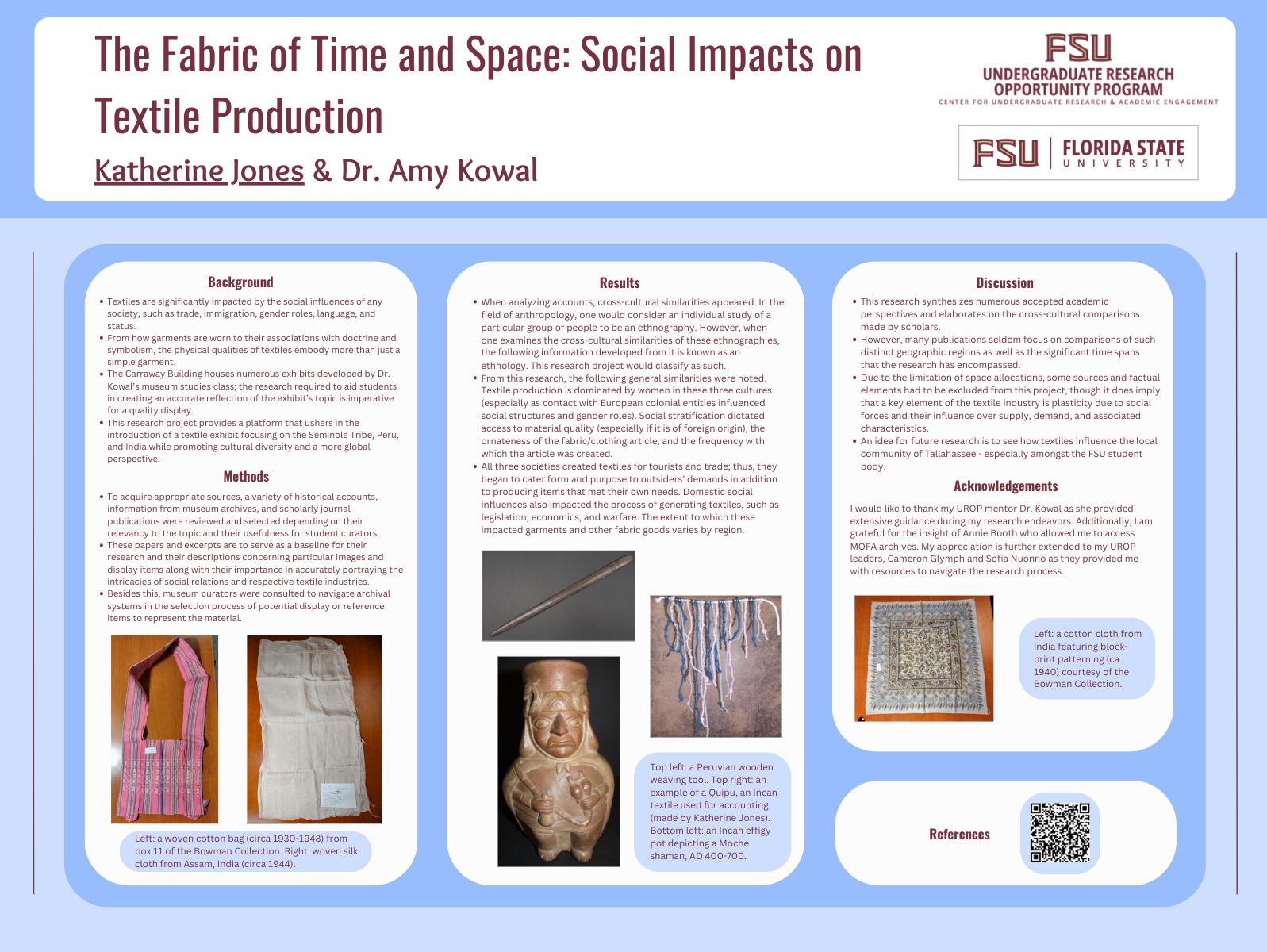Research Symposium
25th annual Undergraduate Research Symposium, April 1, 2025
Katherine Jones Poster Session 4: 3:00 pm - 4:00 pm/ Poster #122

BIO
My name is Katherine Jones and I am an anthropology major minoring in history. The experiences gained through my time as a volunteer and employee at museums in Rockledge and Cocoa, Florida, have cultivated my research interests in social structure, museum studies, and textile production and evolution. I am hoping to utilize my skills to continue operating in museum settings to tell the stories of the past via exhibit curation and by facilitating educational experiences with the public.
The Fabric of Time and Space: Social Impacts on Textile Production
Authors: Katherine Jones, Dr. Amy KowalStudent Major: Anthropology
Mentor: Dr. Amy Kowal
Mentor's Department: Anthropology Mentor's College: College of Arts and Sciences Co-Presenters:
Abstract
Foreign and domestic social relations impact textile industries as they rely on cultural adaptation; cross-cultural examination discloses trends developed by socio-economic factors including gender roles, religion, hierarchy, acculturation, and diffusion that influence production. This research elaborates on distinctions and similarities between textiles in Peru, India, and the Seminole Tribe by referencing resources in scholarly databases and FSU’s collections. The information gathered will be utilized to create a museum exhibit for FSU’s anthropology department. Sources were selected based on relevancy, application potential, and educational value for wider audiences from which an exhibit outline was developed. A conceptual framework was utilized to assess social influences on textile production in addition to further consultation with curators. This resulted in the development of a platform for student curatorial purposes; these findings’ significance connects students to a vital aspect of society and supports cultural diversity as diachronic comparisons reveal trends that have partially survived in modern times. Improved perspectives of globalization can be realized in the identification of the following trends: women dominated textile production especially as European contact influenced social structures and gender roles, status determined access to material quality (especially those of foreign origin), the ornateness of the fabric article, and the frequency of the article's creation. Besides creating commodities that met domestic market demands, all three societies began to cater to foreign influence as trade and tourism supplemented economic needs. Further implications of this research include streamlining textile production processes based on the desire to mitigate manufacturing challenges specific to community contexts.
Keywords: ethnology, textiles, museums, anthropology


